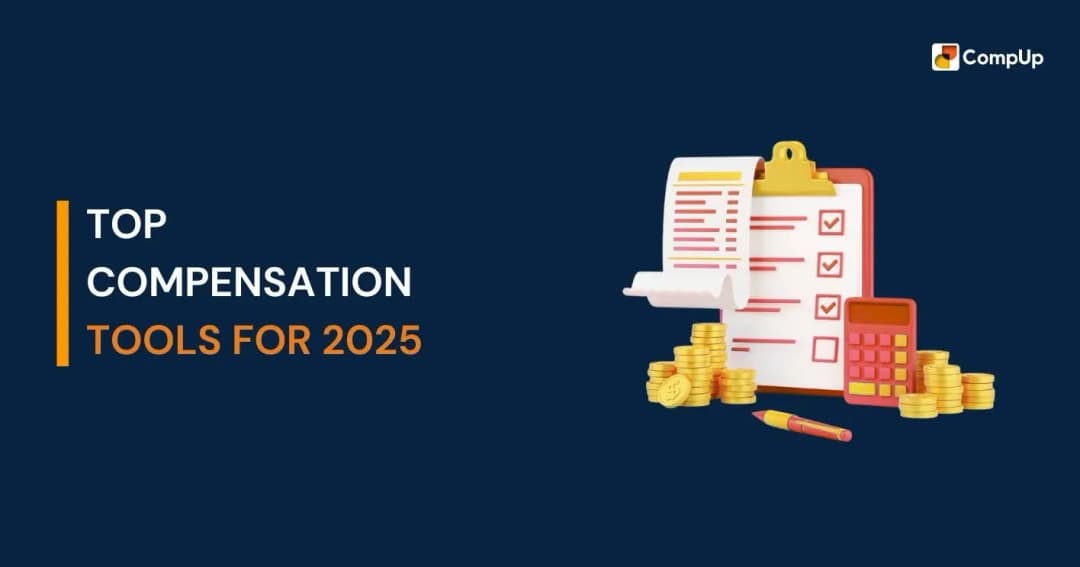
Salary and compensation benchmarking are essential in ensuring that employees feel valued and fairly compensated. While companies often believe they offer fair pay, studies show that only 32% of employees feel they are paid appropriately. Discrepancies in compensation can lead to dissatisfaction, lower morale, and, ultimately, higher turnover.
In this blog, we will explore the top salary benchmarking tools for 2025, highlighting their features and how they can help you make informed, data-backed compensation decisions.
Compensation benchmarking tools play a crucial role in contemporary HR strategies, assisting organizations in maintaining competitiveness and fairness in their pay structures. Here's why they are necessary:
To fully benefit from the power of compensation benchmarking tools, it’s important to know what features to look for. Let’s explore the key features that will help you make the best choice for your organization.
Suggested Read: Creating a Compensation Job Offer Letter: A Template Guide for Every Situation
When selecting a compensation benchmarking tool, it’s important to ensure it offers the right features to meet your organization’s needs. Here are the key features you should look for:
The best benchmarking tools provide access to up-to-date salary data across various industries, roles, and locations. Real-time insights ensure that compensation decisions are based on the most current market conditions, helping you stay competitive and relevant.
Every organization has unique needs. Look for tools that allow you to customize compensation comparisons based on specific factors like company size, industry, job function, and geographic location. Customization ensures that your benchmarking data is relevant and specific to your business.
A good compensation benchmarking tool should integrate easily with your existing HR software, such as payroll, performance management, and talent management systems. This integration ensures smooth data flow, reduces errors, and optimizes your HR processes.
Pay equity tools are essential for identifying and addressing pay disparities within your organization. Look for a tool that can analyze compensation by gender, ethnicity, job function, and other demographics to ensure fairness and compliance with equity standards.
Tools that offer budget simulation and forecasting capabilities allow you to predict the financial impact of compensation changes. It ensures that salary increases and adjustments align with your organization’s budget and long-term goals.
Selecting the right benchmarking tool can help improve HR processes, improve pay fairness, and enhance employee satisfaction. Now, let’s look at the best salary benchmarking tools in the next section.

Explore DEIB in depth with Dr. Laura Quiros in our latest podcast, “Unlocking Diversity, Equity, Inclusion and Belonging.” As an Associate Professor and Trauma-Informed DEI Consultant, she shares actionable insights to create a bias-free, inclusive workplace. Watch the 29-minute episode for fresh strategies on embedding DEIB into your organizational culture.
The tools below are designed to help HR teams align pay structures with market trends, ensure equity, and make data-driven compensation decisions at scale. Staying competitive in 2025 demands access to reliable, real-time compensation data. These tools have the best benchmarking capabilities.
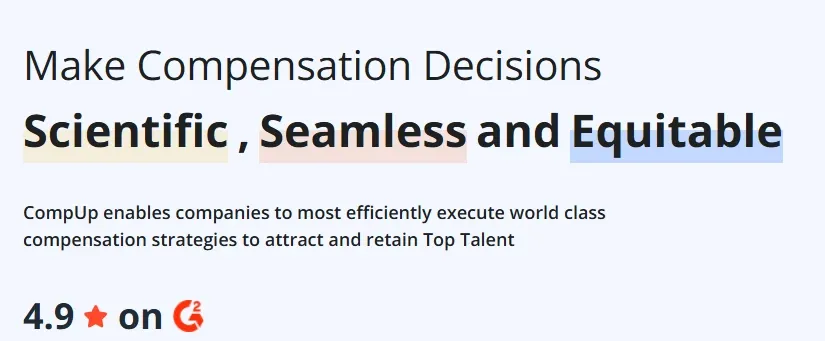
CompUp is a modern compensation management platform designed to help organizations optimize salary benchmarking and reward planning. It combines real-time market data with powerful tools like Compensation Bands for visualizing pay ranges, Budget Simulation for financial forecasting, and Pay Equity analytics to detect and close pay gaps.
Easy API integrations with BambooHR, Lattice, Culture Amp, and other HR systems create a unified view of compensation data, making it easier to align variable pay, promotions, and new hire packages. Additional features like Rewards Statements and Hireshot enhance transparency and employee engagement.
Pros:
Cons:
CompUp stands out as an end-to-end compensation management solution for modern enterprises. By combining benchmarking, pay equity, and automation into one platform, HR leaders can make data-driven decisions.

Payscale MarketPay is a cloud-based compensation platform that provides access to crowdsourced and company-sourced salary datasets. This is through tools like Payscale Peer and MarketPay, which allow organizations to compare pay rates across industries and regions.
The platform offers predictive analytics to model compensation scenarios and align salary structures with market trends. Features such as Salary Budget Surveys and automated data refresh ensure HR professionals can respond quickly to changing labor markets.
Pros:
Cons:
Payscale MarketPay is ideal for organizations seeking agile compensation planning backed by fresh market insights, making it a strong choice for dynamic industries and fast-scaling enterprises.
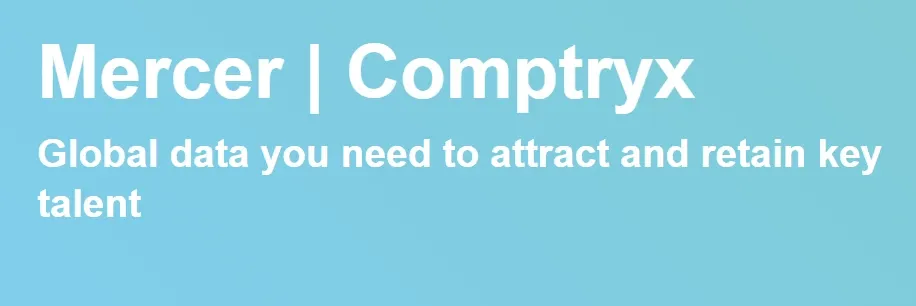
Mercer Comptryx offers a powerful compensation analytics platform tailored for global organizations. It combines salary surveys, workforce analytics, and diversity insights into one system. The tool provides access to extensive global salary datasets covering more than 140 countries and multiple industries.
Features include real-time market comparisons, executive compensation analysis, and pay equity dashboards, enabling HR professionals to fine-tune pay structures. Mercer Comptryx also integrates with HRIS systems to deliver actionable insights for complex, multi-region compensation planning.
Pros:
Cons:
Mercer Comptryx is an excellent fit for multinational corporations seeking advanced analytics and a global view of compensation trends across all levels of the organization.
Suggested Read: Exploring Key Metrics and Uses of HR Analytics for Beginners
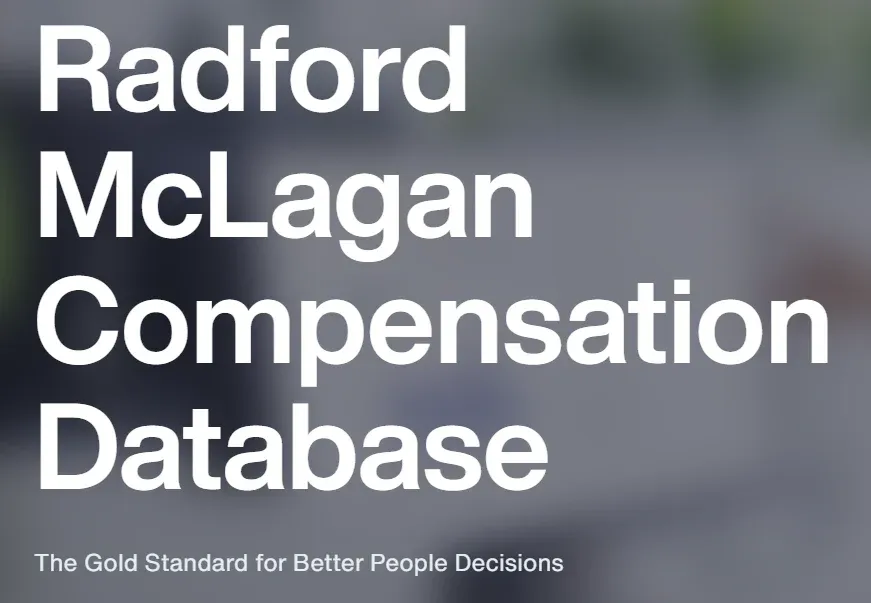
Radford Global Compensation Database is part of Aon’s Radford McLagan Compensation Database, which provides detailed compensation insights across industries, geographies, and job roles. With access to data from over 10 million employees across 100+ countries, it helps organizations benchmark salaries, incentives, and equity awards.
The platform offers industry-specific salary surveys, customizable market reports, and analytics tools to design competitive pay structures. Features like global job leveling and peer group benchmarking make it especially useful for companies scaling in competitive markets.
Pros:
Cons:
Radford is a go-to solution for tech-driven and high-growth companies that need granular compensation data and equity insights to attract and retain top talent globally.

Barley is a modern compensation management platform designed for small to mid-sized organizations seeking transparency and simplicity in pay decisions. It centralizes salary bands, manages variable pay components, and supports equitable compensation practices.
Features include real-time market data integrations, automated salary band adjustments, and pay equity analysis dashboards. Barley also allows HR teams to create compensation cycles, manage approvals, and collaborate with managers within the platform.
Pros:
Cons:
Barley is ideal for organizations looking to build transparent, scalable compensation systems without the complexity of enterprise-grade tools.

Salary.com’s CompAnalyst is a widely used compensation management platform that provides access to extensive salary surveys and market data. It offers tools for job pricing, pay equity analysis, and compensation planning across industries and geographies.
Features include intuitive dashboards, market pricing workflows, and real-time insights into salary trends. CompAnalyst also integrates effortlessly with HRIS systems, enabling HR teams to automate workflows and ensure consistency in pay decisions.
Pros:
Cons:
CompAnalyst is one of the best salary benchmarking tools for HR teams seeking comprehensive salary data and easy-to-use tools for managing compensation at scale.

WTW’s compensation software suite combines powerful analytics with a massive global salary survey database. It supports salary benchmarking, pay structure design, and total rewards management.
Features include the Global Grading System (GGS) for job leveling, pay equity analysis, and tools for managing executive and broad-based compensation. The platform also offers advanced reporting capabilities, allowing HR teams to align compensation with performance and market dynamics.
Pros:
Cons:
WTW is best suited for large, global organizations needing deep insights and structured frameworks for managing diverse compensation strategies.

Deel is a global HR and payroll platform that also offers salary and compensation benchmarking features. Designed for distributed teams, Deel provides access to real-time market compensation data across 150+ countries.
Features include automated salary insights, localized pay data, equity management tools, and compliance support for international hiring. Its integrations with HRIS and payroll systems make it a versatile choice for companies managing global workforces.
Pros:
Cons:
Deel is ideal for companies with globally distributed teams that need to benchmark salaries and manage compensation in a compliant and efficient manner.
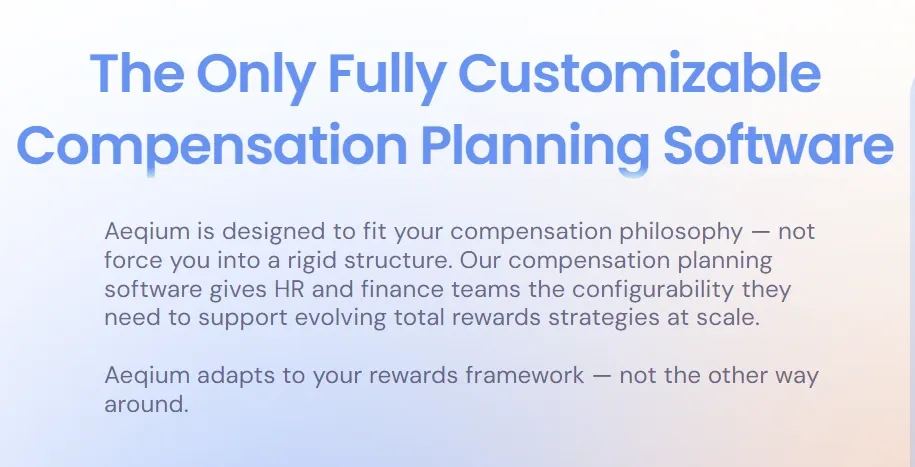
Aeqium is a modern compensation management tool designed to simplify complex pay planning and ensure equitable compensation across organizations. It enables HR teams to manage salary reviews, bonus planning, and equity grants with precision.
Key features include dynamic compensation cycles, manager-friendly dashboards, equity allocation tools, and automated workflows for approvals. Aeqium also integrates with popular HRIS systems, simplifying the entire compensation planning process.
Pros:
Cons:
Aeqium is a strong choice for companies seeking a modern, collaborative platform to manage salary reviews and equity planning efficiently.

Compease is a compensation management software focused on simplifying salary administration and maintaining market competitiveness. It provides access to up-to-date salary survey data, automated pay structure development, and tools for performance-based pay adjustments.
Key features include job evaluation systems, salary range modeling, merit increase guidelines, and reporting dashboards to support data-driven pay decisions.
Pros:
Cons:
Compease works well for organizations seeking a practical solution to design and maintain fair, competitive, and consistent salary structures.
With so many powerful salary benchmarking tools available, the next challenge lies in finding the one that fits your organization’s unique needs. Choosing the right platform requires a strategic approach.
Let us explore how to make that choice effectively.
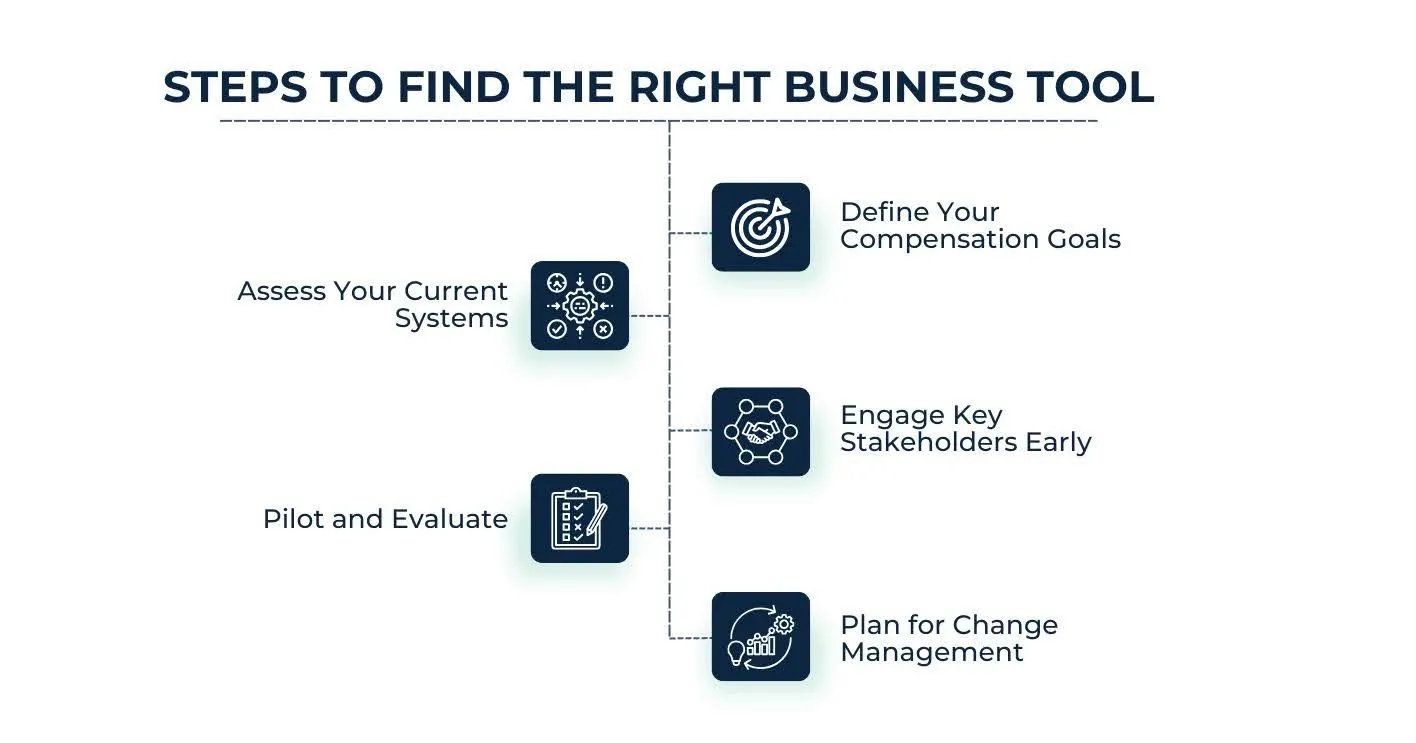
Selecting the right compensation benchmarking tool requires aligning the tool with your organization’s compensation philosophy and operational realities. Follow these steps to make a confident decision:
Staying ahead also means anticipating future shifts in how compensation data is used. Let's examine the emerging trends that will shape compensation benchmarking in 2025 and beyond.
Suggested Read: Steps to Create a Fair and Equitable Compensation System
The world of compensation is rapidly changing, and benchmarking tools are adapting to meet the needs of dynamic workplaces. Staying informed about these trends can help your organization remain competitive and future-ready.
Emerging trends signal a shift toward transparency, agility, and personalization in pay. Organizations that embrace these changes will be able to create dynamic compensation strategies that align with the growing expectations of their workforce and global market shifts.
Staying informed and adopting the right salary benchmarking tools is essential for organizations aiming to attract, retain, and reward talent effectively. The right solution can transform raw market data into actionable insights, ensuring pay structures remain competitive, equitable, and aligned with organizational goals.
CompUp stands out as a comprehensive platform for modern compensation management. From Compensation Benchmarking and Pay Equity Analysis to Budget Simulation, Manager Execution, and Rewards Statements, it equips HR teams with powerful tools to automate workflows, ensure compliance, and deliver transparent, data-driven compensation programs.
Schedule a demo today to discover how CompUp can help your organization build fair, competitive, and future-ready pay practices.
1. What is the best salary benchmarking tool?
CompUp is a top choice, offering features such as Compensation Benchmarking, Pay Equity analysis, Budget Simulation, and API integrations. It delivers real-time market data and customizable workflows for fair, competitive, and data-driven compensation strategies.
2. What is the compensation trend in 2025?
Compensation trends in 2025 focus on pay transparency, real-time benchmarking, AI-powered insights, total rewards strategies, and global equity analysis to support hybrid workforces and diverse geographies.
3. How do we benchmark salary data?
You can benchmark salary data by analyzing industry-specific market surveys, adjusting for geography, role, and seniority. Use tools like CompUp for real-time data, automated equity analysis, and compliance-focused insights to align compensation with market standards.
4. Where is the best place to benchmark salaries?
Specialized platforms like CompUp, Mercer, and Payscale offer reliable, up-to-date salary data. These tools integrate with HR systems to provide accurate, role-specific benchmarks across industries and geographies.
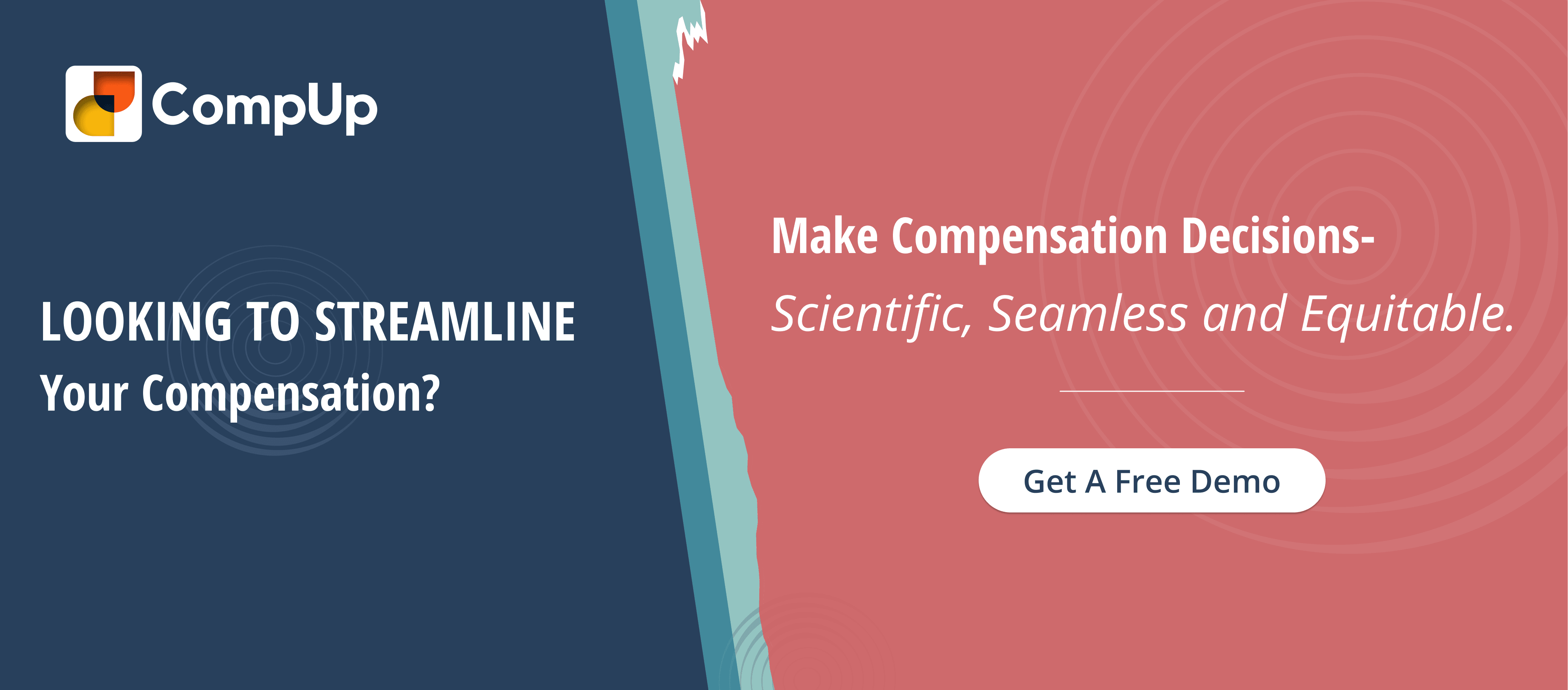
Customer Success Manager - Team Lead
Led by a vision to transform the landscape of total rewards with an innovative mindset and technological advancements.
Revolutionizing Pay Strategies: Don't Miss Our Latest Blogs on Compensation Benchmarking